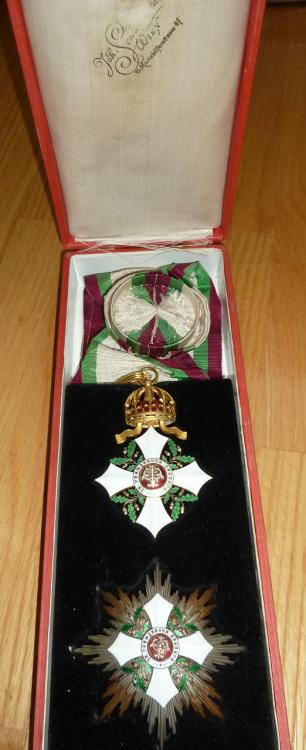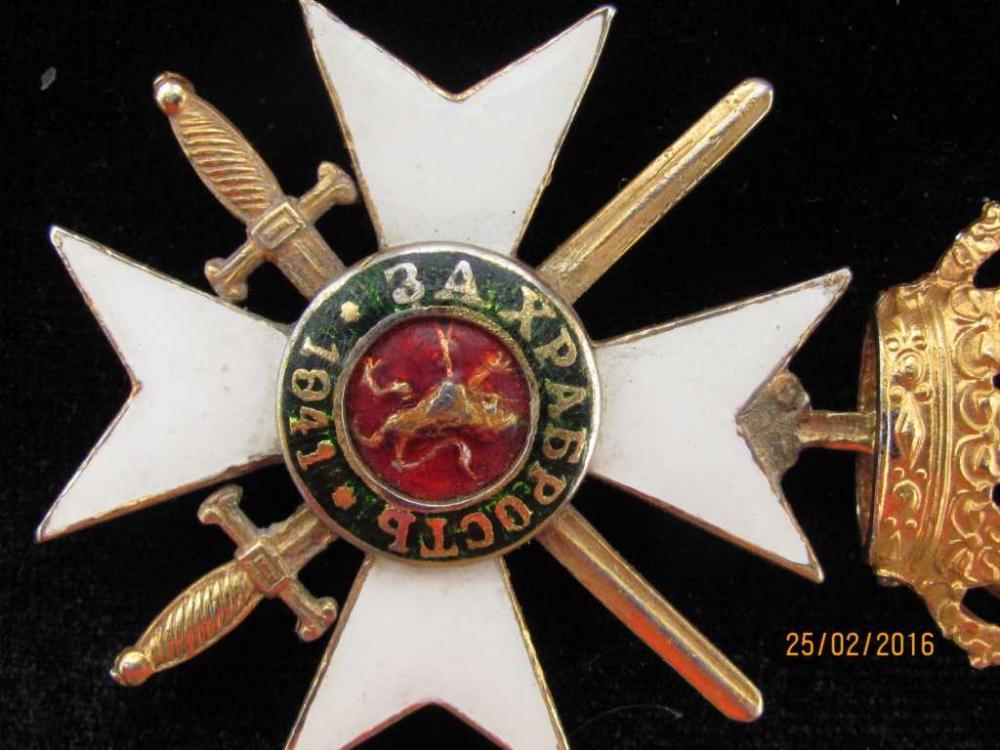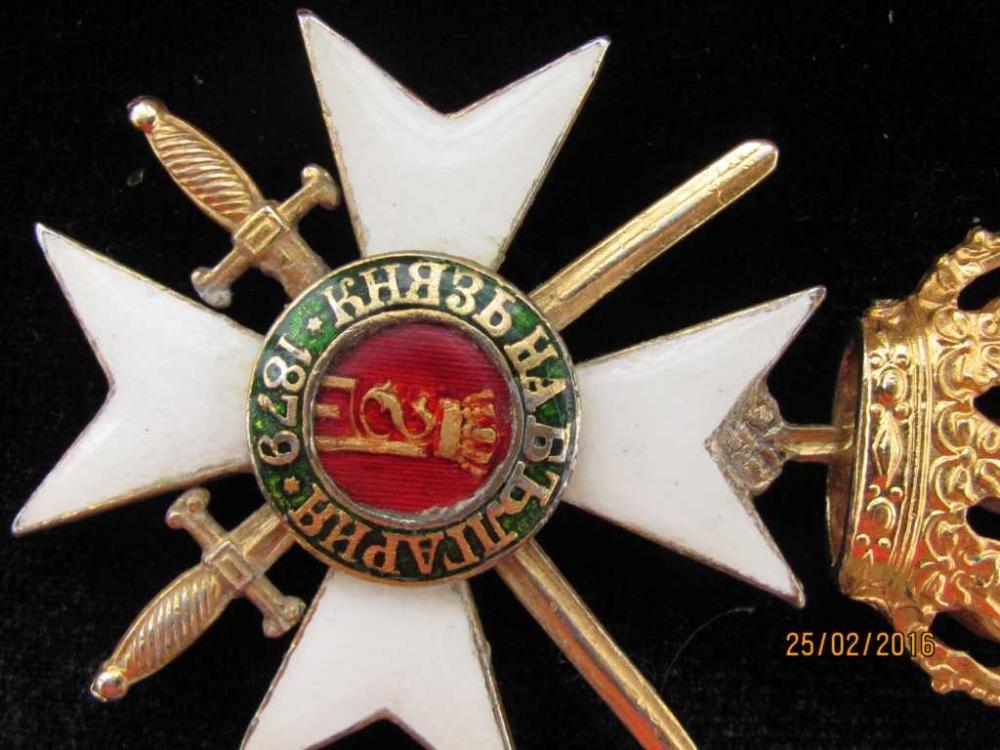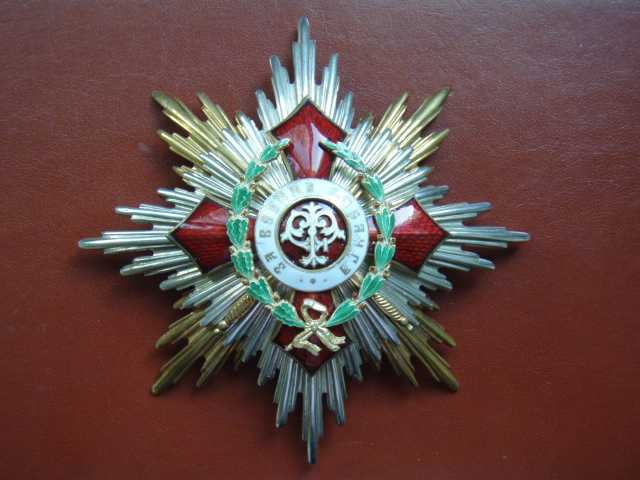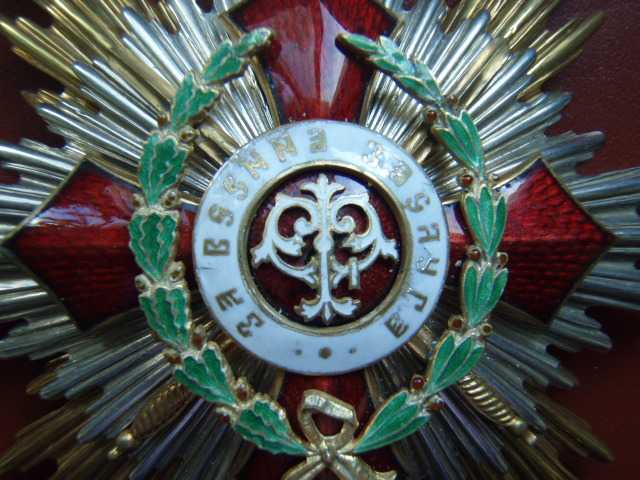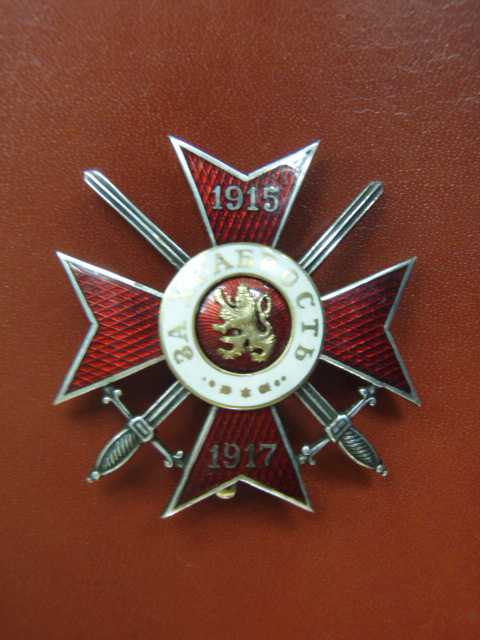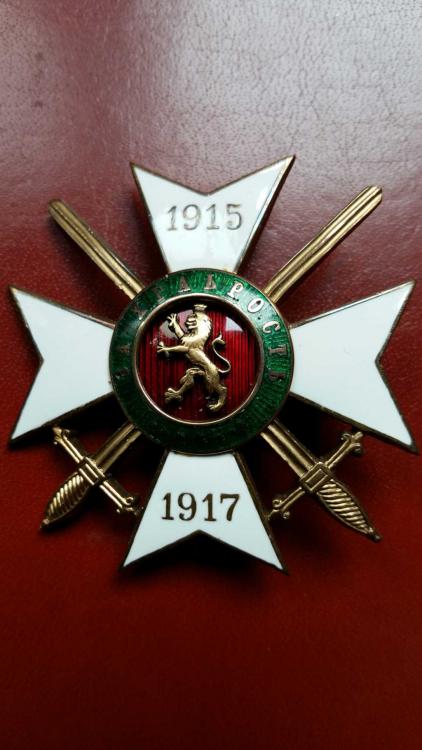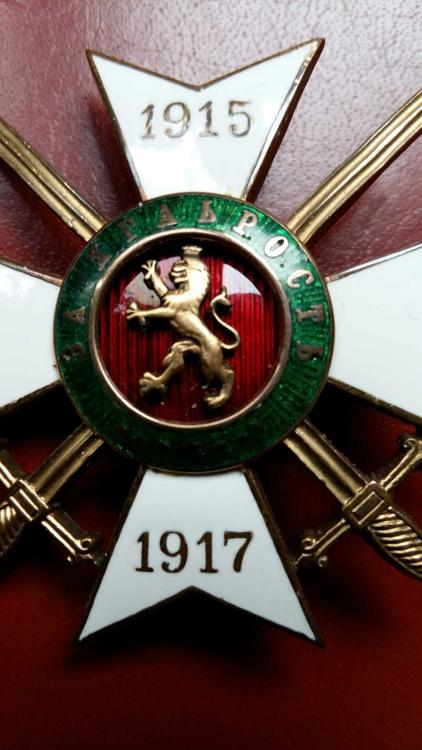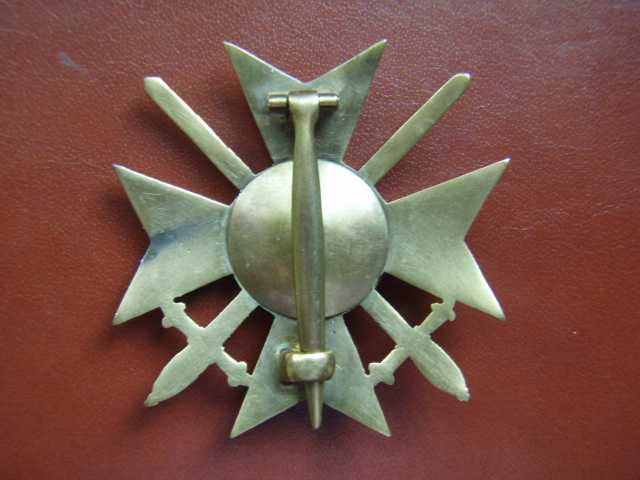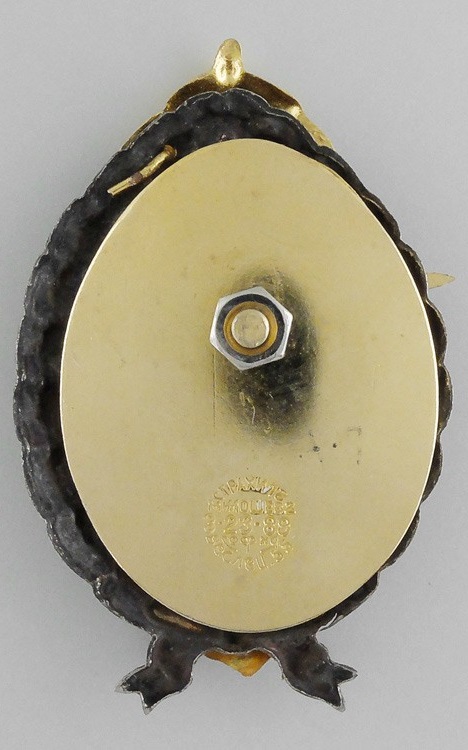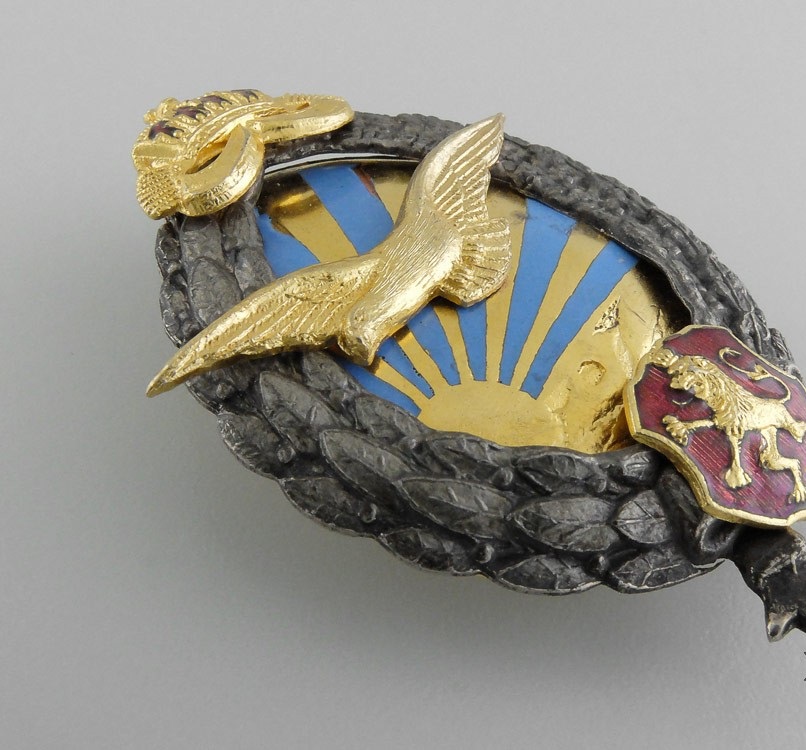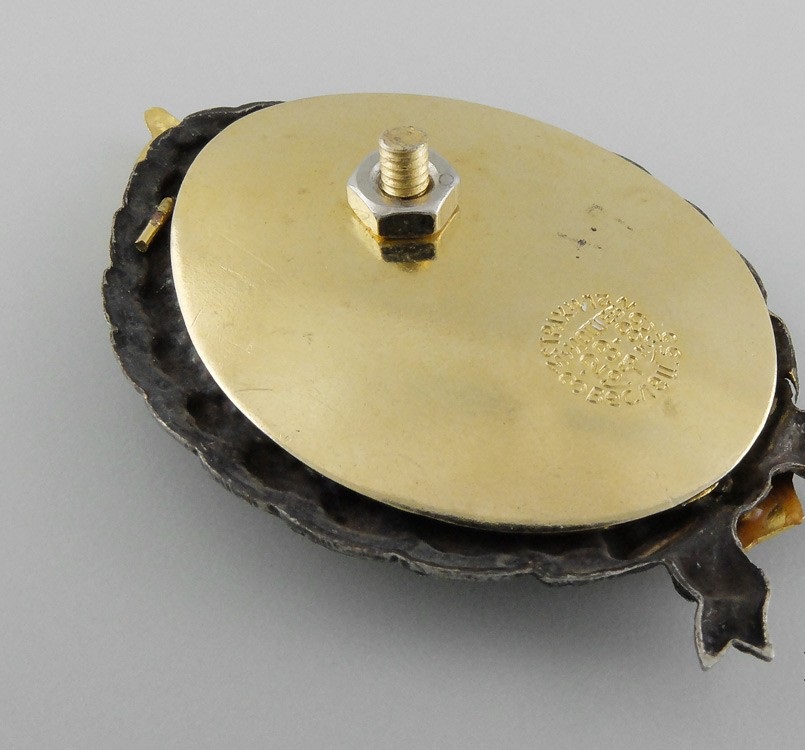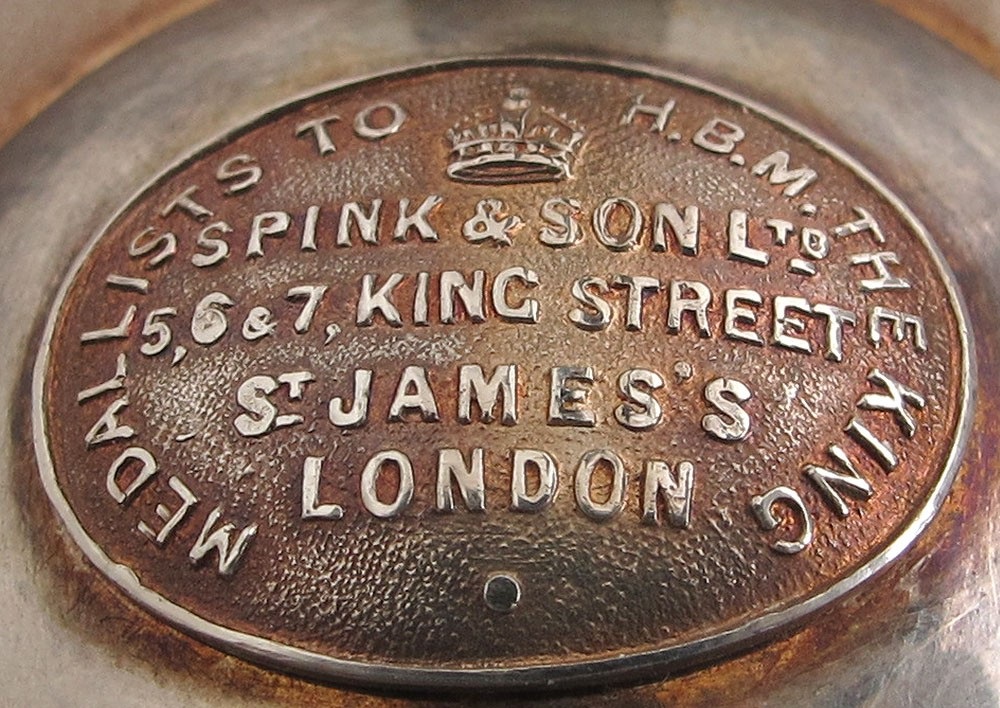-
Posts
1,219 -
Joined
-
Last visited
-
Days Won
3
Content Type
Profiles
Forums
Blogs
Gallery
Events
Store
Everything posted by new world
-

TWO VERY NICE MINIATURES GROUPS
new world replied to Graf's topic in Central & Eastern European States
This award is very rare by itself, but the mini is even rarer. I've never seen one before! Sweet group! -
Here's my 1st class set of Princely emission - with correct period case. Made by Schwertner, marked as such inside the case and on the star. Note how both cross and case have the same rounded princely crown. According to T. Petrov in his book only 373 orders of 1st class were awarded, mostly to foreigners - 344. Only 29 to Bulgarians.
-
fake Suhe Bator sold for $1585!
-

King Ferdinand I's decorations
new world replied to ilieff's topic in Central & Eastern European States
Dealer web site shows this set as SOLD for $41,000!!! -

King Ferdinand I's decorations
new world replied to ilieff's topic in Central & Eastern European States
His awards (from Wiki) National orders and medals Denmark : Order of the Dannebrog Russia : Medal "In Commemoration of the 300th Anniversary of Saint Petersburg Russia : Order of Friendship (20 June 2011) Russia : Order of Alexander Nevsky Dynastic orders Montenegro : Knight of the Order of Saint Peter of Cetinje Montenegro : Knight of the Order of Petrovic Njegos Montenegro : Grand Cross of the Order of Prince Danilo I Bulgaria : Commander of the Order of St Alexander Books on awards by D. Romanov: The Orders, Medals and History of Greece. Balkan Heritage. 1987. ISBN 87-981267-1-7. The Orders, Medals and History of the Kingdom of Bulgaria. Balkan Heritage. 1982. ISBN 87-981267-0-9. The Orders, Medals and History of Imperial Russia. Balkan Heritage. 2000. ISBN 87-981267-4-1. The Orders, Medals and History of the Kingdoms of Serbia and Yugoslavia. Balkan Heritage. 1996. ISBN 87-981267-3-3. The Orders, Medals, and History of Montenegro. Balkan Heritage. 1988. ISBN 87-981267-2-5. -

TWO VERY NICE MINIATURES GROUPS
new world replied to Graf's topic in Central & Eastern European States
This is the best collection of Bulgarian miniatures I've ever seen! Minis are much rarer than the full size awards, as many of them were custom made. Thanks for showing these!!! -

King Ferdinand I's decorations
new world replied to ilieff's topic in Central & Eastern European States
I see both Bulgarian X and XX yr service crosses. Also, for Montenegro - in addition to Danilo Grand cross there's 5th class on the medal bar. -

King Ferdinand I's decorations
new world replied to ilieff's topic in Central & Eastern European States
In reference to Hungarian St Stephen set sold by eMedals: Footnote: This set of insignia belonged to Ferdinand I, Tsar of Bulgaria; the set was sold through auction house “Karlheinz Müller, Limburg”, on 23. September 1989, lot # 063. The lot was purchased by a well-known dealer California based dealer T. Eriksen, for an American client, and eventually, the set was sold to eMedals recently (full name of buyers and provenance will be disclosed to the buyer). -

King Ferdinand I's decorations
new world replied to ilieff's topic in Central & Eastern European States
Colleagues, I have the same Sotheby's catalogue as Graf and can second his opinion that it's truly awesome! One thing to keep in mind - not all orders in this catalogue were awarded to Ferdinand, despite some having precious stones on them. There were many lower class awards which were not suited to King/Knyaz, such as 3rd class crosses, as well as 6th class awards. 36 Bulgarian awards in total - no way he was awarded all of them. Also, some important awards were not part of catalogue/auction, such as Serbian Karageorge 1st class set and others supposedly his. -

Bulgaria FAKE BULGARIAN ORDERS ON THE MARKET
new world replied to Graf's topic in Central & Eastern European States
OMG! I hope no one buys these stars. -

Bulgaria FAKE BULGARIAN ORDERS ON THE MARKET
new world replied to Graf's topic in Central & Eastern European States
-

Bulgaria FAKE BULGARIAN ORDERS ON THE MARKET
new world replied to Graf's topic in Central & Eastern European States
-

Bulgaria Bugaria- Order of St. Alexander ?
new world replied to dedehansen's topic in Central & Eastern European States
Language on the label from the bottom of the box is Italian and the label looks old (likely from the period when this was awarded), so it's possible the recipient was from Italy. But you also have label on the front of the box with Number 4, perhaps inventory label from a museum or an auction. So, Italian awardee could be wrong guess. As for the period - the set was made during Tsar Ferdinand time, between 1908 and 1918. That's as much as you can get in terms of the name - an Italian recipient from 1908-1918. -

Bulgaria Bugaria- Order of St. Alexander ?
new world replied to dedehansen's topic in Central & Eastern European States
1st class set looks good, not sure why you say it didn't exist. The cross is not the same as for 3rd class. It's the same size and both had green enamels, but differences are in center red medallion - 3rd class has lion in the center, while 1st class has elaborate name "St Alexander" in the center. Unfortunately it's almost impossible to know the name of the awarded, unless you have document or box is labeled with the name. In this case only name and the grade is on the label. -

Bulgaria FAKE BULGARIAN ORDERS ON THE MARKET
new world replied to Graf's topic in Central & Eastern European States
-
Vazov, The thing to watch for the crosses without the swords - make sure the swords were not removed recently. There are some "conversions" out there, sellers trying to get more money by removing the swords and selling awards for 2x the price of normal Bravery crosses. 2nd cross is genuine, just in bad condition.
-

Bulgaria FAKE BULGARIAN ORDERS ON THE MARKET
new world replied to Graf's topic in Central & Eastern European States
I'd say all of the above, plus: - green enamel is rough and has small holes, - numbers 5 and 7 are wrong (as compared to known crosses), - pin and catch hook are not typical of Bulgarian awards, - letters in green circle. -

Bulgaria FAKE BULGARIAN ORDERS ON THE MARKET
new world replied to Graf's topic in Central & Eastern European States
-

Bulgaria FAKE BULGARIAN ORDERS ON THE MARKET
new world replied to Graf's topic in Central & Eastern European States
Only cross on the left is in question, correct? Also, as far as I understand cross itself is likely original, but with added diamonds. -

Bulgaria FAKE BULGARIAN ORDERS ON THE MARKET
new world replied to Graf's topic in Central & Eastern European States
I believe this badge is a fake: lack of details, looks brand shiny new, sloppy uneven assembly, lack of correct screwback system... -

73 YEARS SINCE KING BORIS III DEATH
new world replied to Graf's topic in Central & Eastern European States
-

73 YEARS SINCE KING BORIS III DEATH
new world replied to Graf's topic in Central & Eastern European States
-

early St. Alexander
new world replied to Igor Ostapenko's topic in Central & Eastern European States
You've got real rarity! I don't remember seeing such type for sale. I checked all my books and only Prof. Pavlov has this type listed. -
I didn't know Spink was a dealer in orders and medals. Is this the same Spink company which manufactured British and some foreign awards (they made awards for Polish government in exile)?


